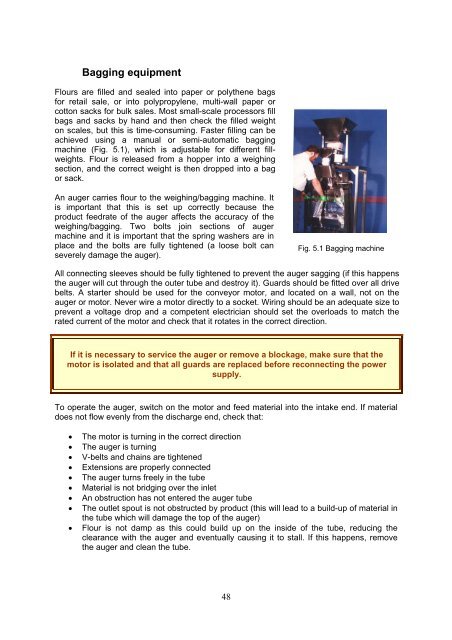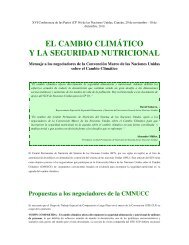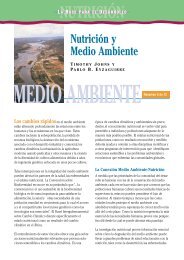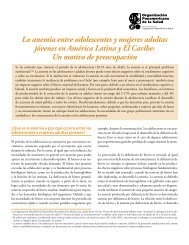Glossary and Abbreviations - Unido
Glossary and Abbreviations - Unido
Glossary and Abbreviations - Unido
You also want an ePaper? Increase the reach of your titles
YUMPU automatically turns print PDFs into web optimized ePapers that Google loves.
Bagging equipment<br />
Flours are filled <strong>and</strong> sealed into paper or polythene bags<br />
for retail sale, or into polypropylene, multi-wall paper or<br />
cotton sacks for bulk sales. Most small-scale processors fill<br />
bags <strong>and</strong> sacks by h<strong>and</strong> <strong>and</strong> then check the filled weight<br />
on scales, but this is time-consuming. Faster filling can be<br />
achieved using a manual or semi-automatic bagging<br />
machine (Fig. 5.1), which is adjustable for different fillweights.<br />
Flour is released from a hopper into a weighing<br />
section, <strong>and</strong> the correct weight is then dropped into a bag<br />
or sack.<br />
An auger carries flour to the weighing/bagging machine. It<br />
is important that this is set up correctly because the<br />
product feedrate of the auger affects the accuracy of the<br />
weighing/bagging. Two bolts join sections of auger<br />
machine <strong>and</strong> it is important that the spring washers are in<br />
place <strong>and</strong> the bolts are fully tightened (a loose bolt can<br />
severely damage the auger).<br />
Fig. 5.1 Bagging machine<br />
All connecting sleeves should be fully tightened to prevent the auger sagging (if this happens<br />
the auger will cut through the outer tube <strong>and</strong> destroy it). Guards should be fitted over all drive<br />
belts. A starter should be used for the conveyor motor, <strong>and</strong> located on a wall, not on the<br />
auger or motor. Never wire a motor directly to a socket. Wiring should be an adequate size to<br />
prevent a voltage drop <strong>and</strong> a competent electrician should set the overloads to match the<br />
rated current of the motor <strong>and</strong> check that it rotates in the correct direction.<br />
If it is necessary to service the auger or remove a blockage, make sure that the<br />
motor is isolated <strong>and</strong> that all guards are replaced before reconnecting the power<br />
supply.<br />
To operate the auger, switch on the motor <strong>and</strong> feed material into the intake end. If material<br />
does not flow evenly from the discharge end, check that:<br />
• The motor is turning in the correct direction<br />
• The auger is turning<br />
• V-belts <strong>and</strong> chains are tightened<br />
• Extensions are properly connected<br />
• The auger turns freely in the tube<br />
• Material is not bridging over the inlet<br />
• An obstruction has not entered the auger tube<br />
• The outlet spout is not obstructed by product (this will lead to a build-up of material in<br />
the tube which will damage the top of the auger)<br />
• Flour is not damp as this could build up on the inside of the tube, reducing the<br />
clearance with the auger <strong>and</strong> eventually causing it to stall. If this happens, remove<br />
the auger <strong>and</strong> clean the tube.<br />
48

















